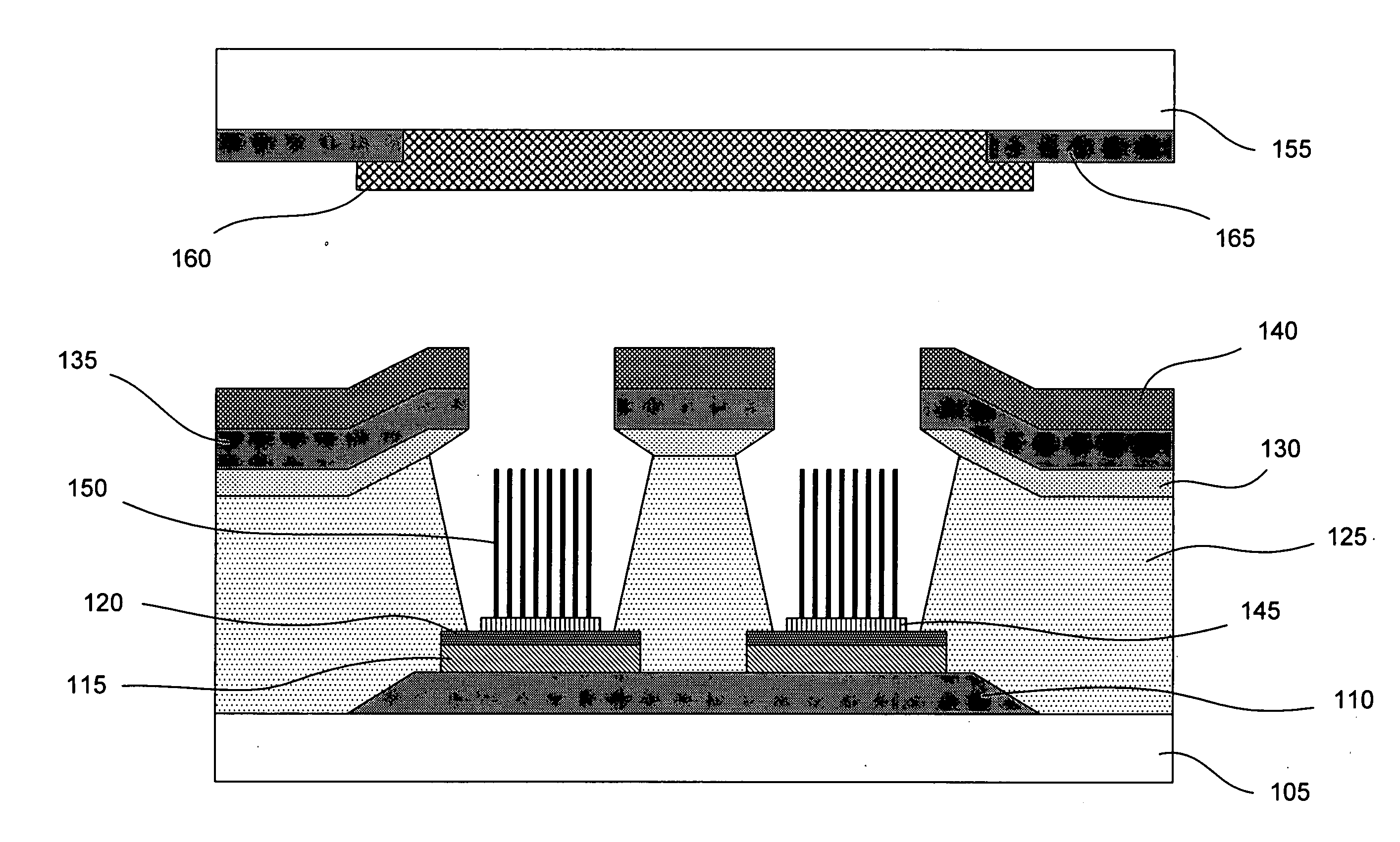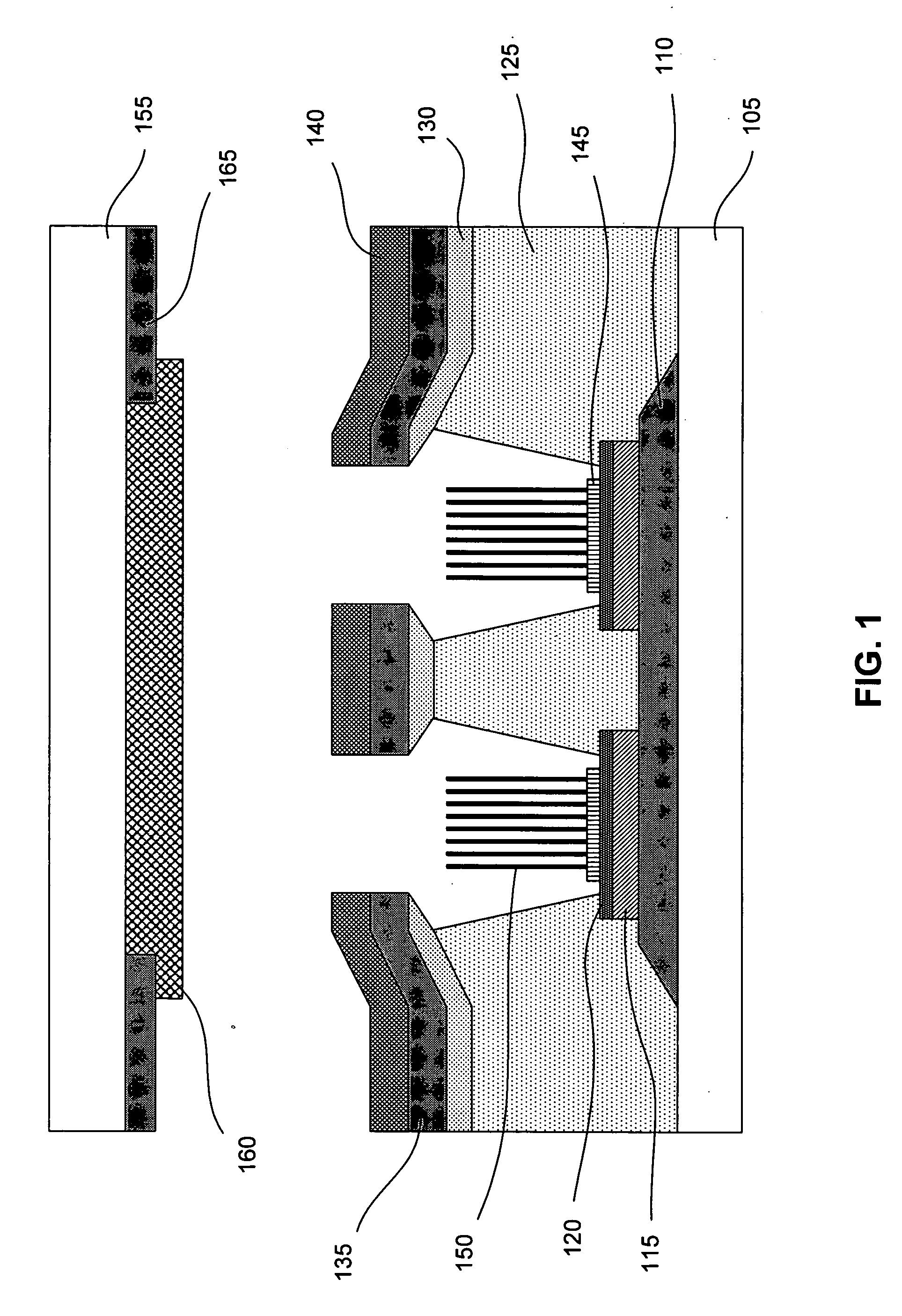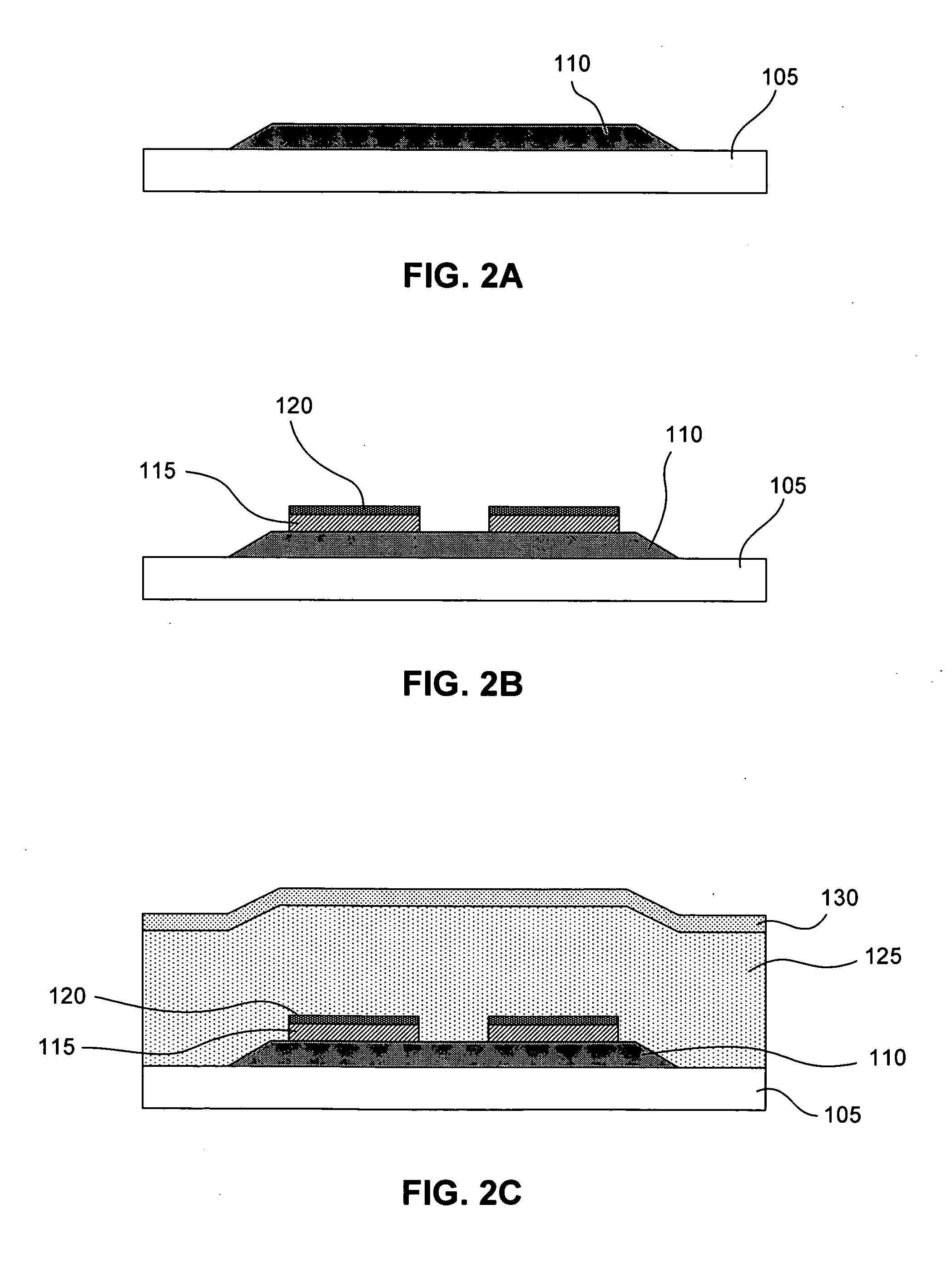Cathode structure for field emission device
a cathode and emission device technology, applied in the direction of discharge tube/lamp details, nanoinformatics, discharge tube luminescnet screens, etc., can solve the problems of high redundant electron source for display, serious and possibly damaging design, etc., to reduce or eliminate electrical shorting, avoid or reduce arcing, and the driving of the device is made more stabl
- Summary
- Abstract
- Description
- Claims
- Application Information
AI Technical Summary
Benefits of technology
Problems solved by technology
Method used
Image
Examples
Embodiment Construction
[0016]FIG. 1 illustrates one embodiment of a field emission device for emitting electrons, such as a portion of a CNT-based field emission display described above. The field emission device shown in FIG. 1 comprises two main structures: a cathode structure and an anode structure. The cathode structure includes a number of layers of material deposited over a substrate 105, such as glass. In one embodiment, the layers of the cathode structure include an emitter electrode 110, a resistor layer 115, a barrier layer 120, one or more insulating layers 125 and 130, a gate electrode 135, and a passivation layer 140. The cathode structure further comprises electron emitters 150, such as carbon nanotubes, which are situated in one or more emitter holes formed through a portion of the cathode structure. Preferably, the electron emitters 150 are disposed on or in electrical coupling with the emitter electrode 110. The electron emitters may be formed from a catalyst layer 145, which rests over t...
PUM
 Login to View More
Login to View More Abstract
Description
Claims
Application Information
 Login to View More
Login to View More - R&D
- Intellectual Property
- Life Sciences
- Materials
- Tech Scout
- Unparalleled Data Quality
- Higher Quality Content
- 60% Fewer Hallucinations
Browse by: Latest US Patents, China's latest patents, Technical Efficacy Thesaurus, Application Domain, Technology Topic, Popular Technical Reports.
© 2025 PatSnap. All rights reserved.Legal|Privacy policy|Modern Slavery Act Transparency Statement|Sitemap|About US| Contact US: help@patsnap.com



